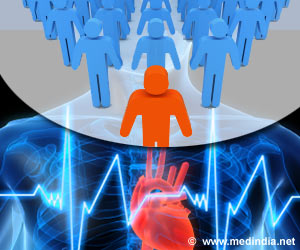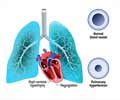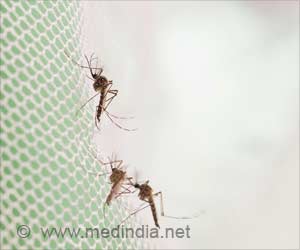A breakthrough surgery performed by Fortis Malar Hospital, Chennai, has offered hope for more than 1.5 million patients in India suffering from heart failure.

The successful surgery was performed by Dr. K. R. Balakrishnan, Director - Cardiac Sciences, and the team of senior doctors comprising Dr. K. G. Suresh Rao (Head of Cardiac Anaesthesia and Cardiac Critical Care), Dr. Nandkishore Kapadia (Senior Consultant Cardiothoracic Surgeon), Dr. Ravi Kumar and Dr. Madan Mohan (Senior Consultant Interventional Cardiologists).
The patient, Mr Rajasekar, was diagnosed with coronary artery disease that led to a heart attack seven years ago. Over the years, despite medication the coronary artery disease continued to weaken his heart leading to heart blocks and left ventricular dysfunction. His heart function gradually declined, eventually dropping to 20 percent efficiency. As a result, he also experienced renal failure. His fragile condition made heart transplant, the only viable solution. However, the patient's rare blood group made a donor search more difficult. It was then that the cardiac team at Fortis Malar took a decision to perform the HeartMate II LVAD implant surgery on him.
"Our aim was to give Mr Rajasekar a permanent solution to his heart failure problem through the implantation of an artificial assisted mechanical device called 'Heart Mate II LVAD'. This is the most sophisticated technology available in the world and a permanent solution to heart failure. It is a destination therapy for patients who can't find a donor or may not survive a transplant and offers many advantages. The machine has a 90% survival rate and can extend life for at-least 10 years. We are glad that Mr Rajasekar has recovered well and has become the first patient in India to undergo this procedure" said Dr Balakrishnan, Director, Cardiac Sciences, Fortis Malar Hospital.
LVAD devices have been used primarily as a bridge to a heart transplant till the U. S. Food and Drug Administration (FDA) approved them as a destination therapy. The device performs the function of the left ventricle of the heart and pumps the blood when the heart is too weak to do so on its own. Former US Vice President Dick Cheney is amongst the many patients who have got longevity of life through this implant.
Heart failure is a major public health problem globally with significant morbidity and mortality despite maximal medical therapy. The five year survival is often less than 50 percent, and in patients with severe symptomatic heart failure, two year survival can be as low as 10 percent and in several instances the prognosis is worse than cancer.
Advertisement
"We are proud to be at the leading edge of treating cardiac disorders in the country and working with our talented cardiac teams in bringing new generation advancements to our patients. The implant procedure has the potential for widespread application in our country. It reaffirms our commitment to evolve life saving Cardiac surgery at our hospitals in India" said Mr Aditya Vij, Chief Executive Officer, Fortis Healthcare, India.
Advertisement
LVAD (Left Ventricular Assist Device) is a mechanical device that circulates blood throughout the body when the heart is too weak to pump blood on its own. It is sometimes called a 'heart pump' or 'VAD'. HeartMate II is a miniaturized implantable LVAD that represents a breakthrough in medical technology and has rapidly become the most widely used device of its kind in the world.
HeartMate II does not involve the Replacement of the patient's native heart which is not removed. HeartMate II attaches to the heart and is designed to assist, or rather take over, the pumping function of the patient's left ventricle, which is the main pumping chamber of the heart. It provides continuous flow of blood without a pulse. The device is placed just below the diaphragm in the abdomen. It is attached to the left ventricle and the aorta, the main artery that carries oxygenated blood from the left ventricle to the entire body. An external, wearable system that includes a small controller and two batteries is attached by an external driveline. The wearable system is either worn under or on top of clothing.
HeartMate II is designed to restore blood flow throughout the body, enabling the patient to breathe more easily and feel less fatigued. The patient's organs receive more blood than they did before receiving the LVAD, and this likely improves their organ function. After receiving an LVAD, patients generally feel more energetic and are able to resume normal activities that they were unable to do prior to receiving the device.
Because patients are in a severe stage of heart failure before receiving the device, they are much debilitated and typically very limited in terms of activity level. After receiving HeartMate II, the majority of patients can return to their favorite daily activities, with the primary limitation being water immersion. Many patients are able to return to work and resume hobbies that they haven't been able to do for years.
Source-ANI















